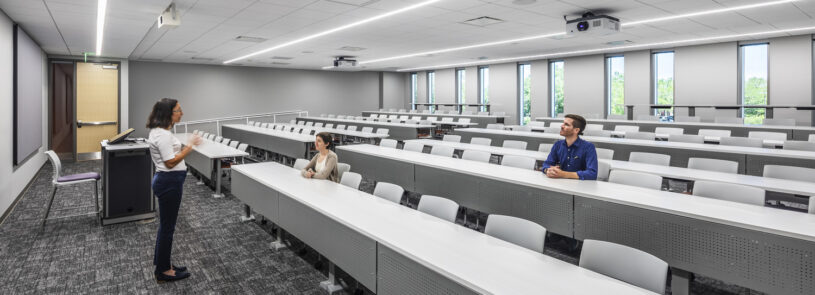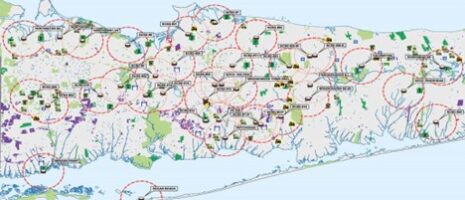5 tips for better academic space utilization

IMEG Technology Designer of Distinction Davin Huston delivers high-performance environments using innovative strategies for acoustics, audio/video systems, and control systems. Davin has years of experience in IT integration, acoustics, and audio/video design, and was a professor Purdue University for 12 years.
By Davin Huston
Do your academic spaces sometimes look like this photo? Academic space utilization assessments are a key to finding the currency on campus. But there’s more to the topic when considering technology deployments.
Space utilization studies study the number of hours a room is used, and at what capacity. While that’s a great start, here are five action areas to consider:
Room utilization and capacity
Identify mismatches between room use and capacity to help you make informed decisions about reassignment or technological upgrades.
Start by gathering data on current room assignments, course schedules, and room capacities. Then you can compare the capacities with the enrollment data for each course, highlighting rooms that are significantly over or under capacity. Next, examine which courses are scheduled in mismatched rooms and either reassign courses to better-suited rooms based on capacity, or consider technological upgrades, like adding HyFlex capabilities, to enhance the functionality of underutilized rooms.
Equipment utilization
Furniture, whiteboards, smartboards, screens and other equipment cost money. If that equipment is not being used, can it be repurposed where it will be? Even small savings in utilization can be redirected to other needed projects.
Start with an inventory of the equipment in each room and track its usage over a defined period. Use the data to find underutilized equipment and repurpose it in areas where it is needed. Reallocate any budget savings to other necessary projects.
Virtual use of space
If the room has the right technology, its use can be maximized as a virtual or hybrid classroom.
Evaluate the current technology in each room to determine virtual/hybrid classroom capabilities. Use that information to plan which rooms can be used for hybrid or rotating in-person schedules. Upgrade rooms that lack technology to support virtual/hybrid and add the new capabilities to the scheduling system to maximize their use.
Feedback from faculty, staff, and students
The people who use the rooms regularly will have opinions. For instance, perhaps small capacity rooms get a modest technology upgrade and are assigned as research space to help attract and retain research faculty? Or maybe they are outfitted with decent lighting, microphones, and acoustics and scheduled to record classes that will be offered on-demand? Maybe these underused rooms are next to space that needs to be expanded.
To gather feedback, conduct surveys and interviews with faculty, staff, and students, and analyze that information to find common themes and practical suggestions. Use that analysis to guide room reassignments, technological upgrades, and space renovations, and to implement specific suggestions.
Pedagogical considerations
When classroom decisions are made, looking at straight throughput and benchmarking may mean saying we have 300 students taking this class, so we’ll put them in a 300-person auditorium. But that may not support effective teaching methods.
Begin by working with academic departments to understand the pedagogical needs of their courses, and balance room assignments with teaching methods, not just student numbers. Avoid putting large classes in auditoriums if smaller, more interactive settings are pedagogically preferable. Wherever possible, Design classroom spaces to support various teaching styles and methods of student engagement.
Combining these steps creates a comprehensive approach to optimizing campus space utilization. This involves continuous monitoring, incorporating feedback, and being flexible to adjust to emerging needs and technological advancements. By balancing practical data analysis with the insights of room users and pedagogical needs, higher education leaders can create an environment that supports effective teaching and efficient use of resources.











